Atlantic Crossings (Football in North America, Part Two)
When today’s top football clubs routinely jet around the world for pre-season tours and lucrative friendlies in North America and beyond, it’s hard to imagine what an undertaking trans-continental travel was in the days before passenger flights. In the nineteenth century an Atlantic crossing in bad weather could stretch into weeks, though by the early twentieth century steam-powered ocean liners had reduced times to around five days, under good conditions. Shipping companies including Cunard and the White Star Line competed for the Blue Riband, an unofficial recognition of the fastest average speed. In the peak years of immigration from Europe to the US, the great liners carried between 1,500 and 2,000 passengers per crossing – some of them footballers. Leaving from ports such as Hamburg and Liverpool, ships including S.S. Leviathan (built as the German Vaterland), R.M.S. Mauretania and, later, the Queen Mary and Elizabeth, were the only means of travel between the two continents.
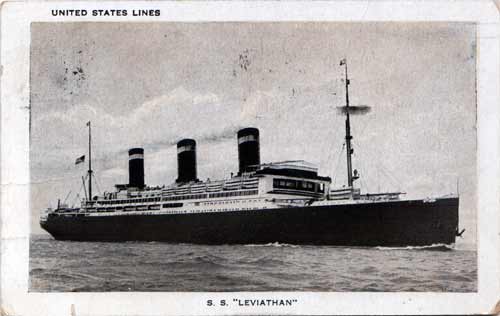
The initial football journeys were undertaken from North America to Europe, with the very first tour setting out from Canada to the UK in 1888, the year the Football League was launched. The Canadian party was from the Western Football Association, formed in 1880; 17 of the 18-man squad were born in Canada, with David Forsyth the lone exception, hailing from Scotland though his family emigrated when he was two. Such was the success of this two-month adventure that a second, expanded tour was arranged for 1891, with fixtures stretching into 1892. On this occasion the Canadians were unable to muster a full squad, and it was a combined Canada-USA group which embarked to play an incredible 58 fixtures over the course of four months. Both parties included Walter Bowman, soon to become the Football League’s first overseas player with Accrington, later moving to Ardwick / Manchester City during his eight-year career in the Football League. When the US became affiliated to FIFA in 1916, they sent a team to Norway and Sweden to play their first official international fixtures. With the popularity of the domestic game growing ahead of the creation of the American Soccer League (ASL) in 1921, club sides also ventured across the Atlantic; Bethlehem Steel headed to Sweden in 1919, followed a year later by St Louis Soccer Club.
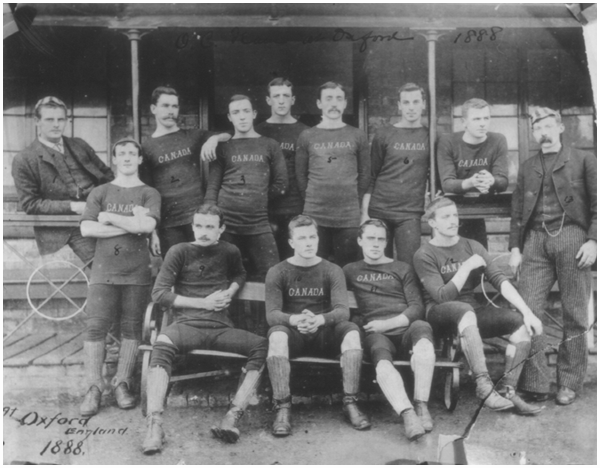
While several English league teams made the arduous voyage to South America in the early years of the twentieth century, few ventured to the north of the Continent. Only the amateur teams Pilgrim F.C. (in 1905 and 1909) and those tireless sporting ambassadors, the legendary Corinthian F.C. (1906, 1911, 1924), initially took on this demanding challenge. Given the length of the journey, it was only worthwhile if as many fixtures as possible could be fitted into the tour, which restricted professional clubs. Notable early visitors were the celebrated Dick, Kerr’s Ladies in 1922, who had suffered from the FA’s ban on women’s football a year earlier. They discovered that a similar restriction was in place on arrival in Canada and found themselves facing men’s teams in America, but returned to England with the creditable record of three wins, three draws and three defeats from their nine games. The Worcestershire FA organised reciprocal tours with their Massachusetts counterparts, sending a party of 20 across the Atlantic from Liverpool on the White Star Liner Celtic for a five-week tour in September 1930 (the return fare was stated as £35). They played five matches in Worcester County, Mass., and enjoyed great hospitality, including “numerous banquets and luncheons”.
The English FA meanwhile approved its first trans-Atlantic forays, sending representative sides to Canada in both 1926 and 1931, while the Welsh FA played fixtures in the same country in 1929. Professional teams followed; Preston North End became the first Football League club to visit the US during a four-game tour in 1929, when they were on the receiving end of an Archie Stark hat-trick in a 5-1 defeat to Bethlehem Steel. Charlton Athletic enjoyed better fortunes during an unbeaten tour of both Canada and the US in 1937, having sailed on the Empress of Australia from Southampton to Quebec.

Scottish teams proved keener on making the trip, in part attracted by the large emigrant population, as the North American game moved into the professional era. The now-defunct Third Lanark were the first to take the plunge, in 1921 for an epic two-month, 22-game tour, backed by the Scottish FA and featuring several ‘guest’ players. They went under the name of All-Scots sponsored by Third Lanark FC and paved the way for Glasgow giants Rangers (1928, 1930) and Celtic (1931), together with Kilmarnock (1930) in the ASL’s boom years. The Scottish FA itself sent a team to Canada in 1927, and added the USA to their itinerary in 1935 and 1939. Among Canada’s leading players, goalkeeper Joe Kennaway and Robert ‘Whitey’ McDonald both made such an impression on the touring sides that they ended their careers with Celtic and Rangers, respectively.
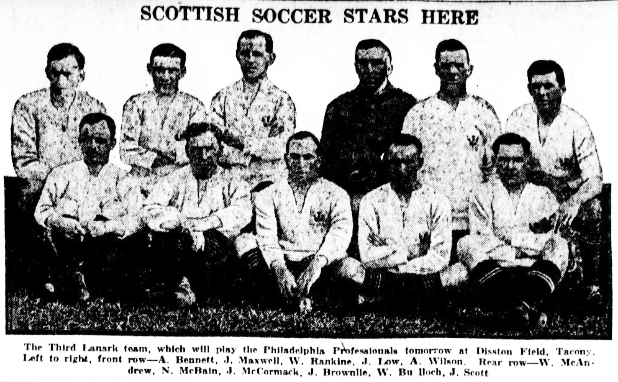

Joe Kennaway 
Robert ‘Whitey’ McDonald
Teams from across the world began to undertake the North American tour during the ASL years – among the international visitors were Hungaria / MTK from Hungary, Mexico’s Marte FC, Nacional of Uruguay, Palestra Italia (another composite side from several clubs), Sparta Prague, and Vélez Sarsfield of Argentina. Breaking the mould of the lengthy tour, Real Madrid came to the US in 1927 for a single game against Galicia FC in Brooklyn. Many of these sides drew large and enthusiastic crowds from among the local emigrant populations. The ASL also attracted stars of the famous Hakoah Vienna team, Champions of Austria in 1924-25 – the league had a strong Jewish influence among its owners and fans, and Hakoah undertook a successful tour in 1926. Their fixture against the New York Stars at Upper Manhattan’s Polo Grounds attracted a crowd of 46,000, which remained a record until the formation of the NASL half a century later. Such was the tour’s success that several players were induced to remain in the US, notably Béla Guttmann, to the point where a Hakoah side was eventually formed in New York. Leo Drucker, József Eisenhoffer, Max Grünwald, Moritz Häusler, Ernő Schwarcz, and Siegfried Wortmann were among the team-mates to leave for the ASL. The Hakoah All-Stars also boasted Guttmann’s compatriots János Nehadoma, later to star in Serie A with Fiorentina, and László Sternberg, captain of Hungary at the 1934 World Cup.
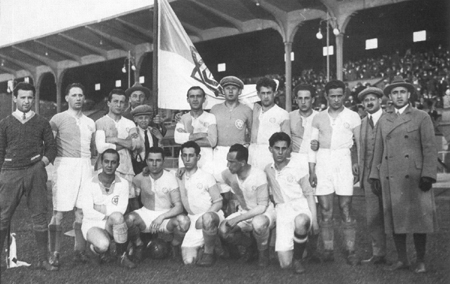
Perhaps the most celebrated tour of North America before the Second World War was that of Barcelona in 1937 during the Spanish Civil War, under their Irish coach Patrick O’Connell. That trans-Atlantic trip, spanning multiple fixtures in Mexico and the US between June and September, is widely believed to have saved the club. The fact that, like Hakoah, several players chose to stay behind – only five returned to Spain – was secondary to the welcome publicity and vital cash which the tour brought.
In 1930, there was a resurgence of tours from North America, with Fall River Marksmen travelling to Europe and the ethnic team Germania Milwaukee (playing as the German-American All-Stars) making the trip to Germany. A more exotic expedition was undertaken by the Hakoah All-Stars in the same year, who set off for fifteen games in Brazil, Argentina and Uruguay, meeting top club sides such as Vasco da Gama, Independiente and Peñarol. The contacts made on this tour later led to Guttmann coaching São Paulo, where he is credited with influencing the style of play which set Brazil on the way to their first World Cup triumph in 1958, and a shorter spell in charge of Uruguay’s Peñarol in 1962.
The first tours after the Second World War continued to use the ocean liners. Liverpool’s enterprising Chairman, Bill McConnell, took the club to North America, sailing from Southampton on the Queen Mary in May 1946. McConnell, who was in the catering business, had spotted an opportunity when visiting the US in 1945, noting the abundance of food in contrast to the UK’s rationing. The dietary benefits contributed to Liverpool lifting the First Division title the following season, and led them to return in 1948, again by boat, this time from their home port on the Queen Elizabeth. After Newcastle made the trip in 1949, Manchester United, under Matt Busby, followed suit with a successful trans-Atlantic trip in 1950 which established their international popularity and set the template for their future globe-trotting. They too travelled on the Queen Mary.
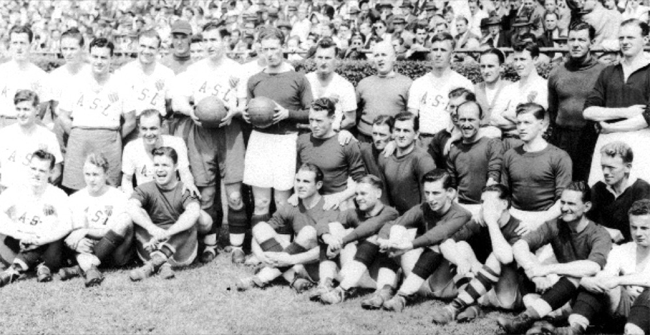
The English FA tour of the same year, 1950, was among the last times that British visitors used boat travel, making their way to Canada on the R.M.S. Empress of Scotland. Part of the chaotic preparations for the World Cup in Brazil, this squad played 11 games in Canada and the US – including against Manchester United in Toronto – while three other representative England sides were touring Europe. The full squad flew to the World Cup in Brazil on a 31-hour journey via Paris, Lisbon, Dakar and Recife. When Stanley Matthews was summoned to join them from North America, after enduring a 28-hour flight, he discovered he was not in the team. The shambolic organisation and a humbling defeat to the USA shook England’s confidence as a football power. Meanwhile the world was on the cusp of the jet age, and the days of lengthy Atlantic crossings were soon to be over.
The wealth of information on the Society for American Soccer History website was invaluable for this feature. With thanks also to England Football Online, a comprehensive site for all resources relating to the national team, for helpfully clarifying details of how the FA squad travelled to Canada in 1950.
For someone who is not a football fan, the sporting themes and historical events that this article brilliantly pulls together make for an enthralling read. The Irish coach-led Barcelona team, setting out during the time of the Spanish Civil War, was a revelation and an eye opening reminder of how much has changed where the ‘modern game’ is concerned. Childhood memories of football during the 1970s have been well and truly stirred, and a visit to YouTube – ‘Jimmy Hill steps in as emergency linesman’ – is now very much in order, a spectacle I’d heartily recommend to anyone not yet blessed with having witnessed that particular marvel of football’s past. On the point of the obvious potency of the visual image, the accompanying images in this excellent article serve only to enhance the obvious feel for the enigmatic that the author clearly demonstrates; the links were perfectly placed. Will there be a book?
Thanks so much for taking the time to comment Chris, and very glad you enjoyed the article. I’m planning to develop this topic among many, so I hope you’ll dip in to future trips down Memory Lane. As for a book, that would be a long-term goal!
P.S. The Jimmy Hill linesman clip is memorable on many levels – not least his fetching tracksuit…